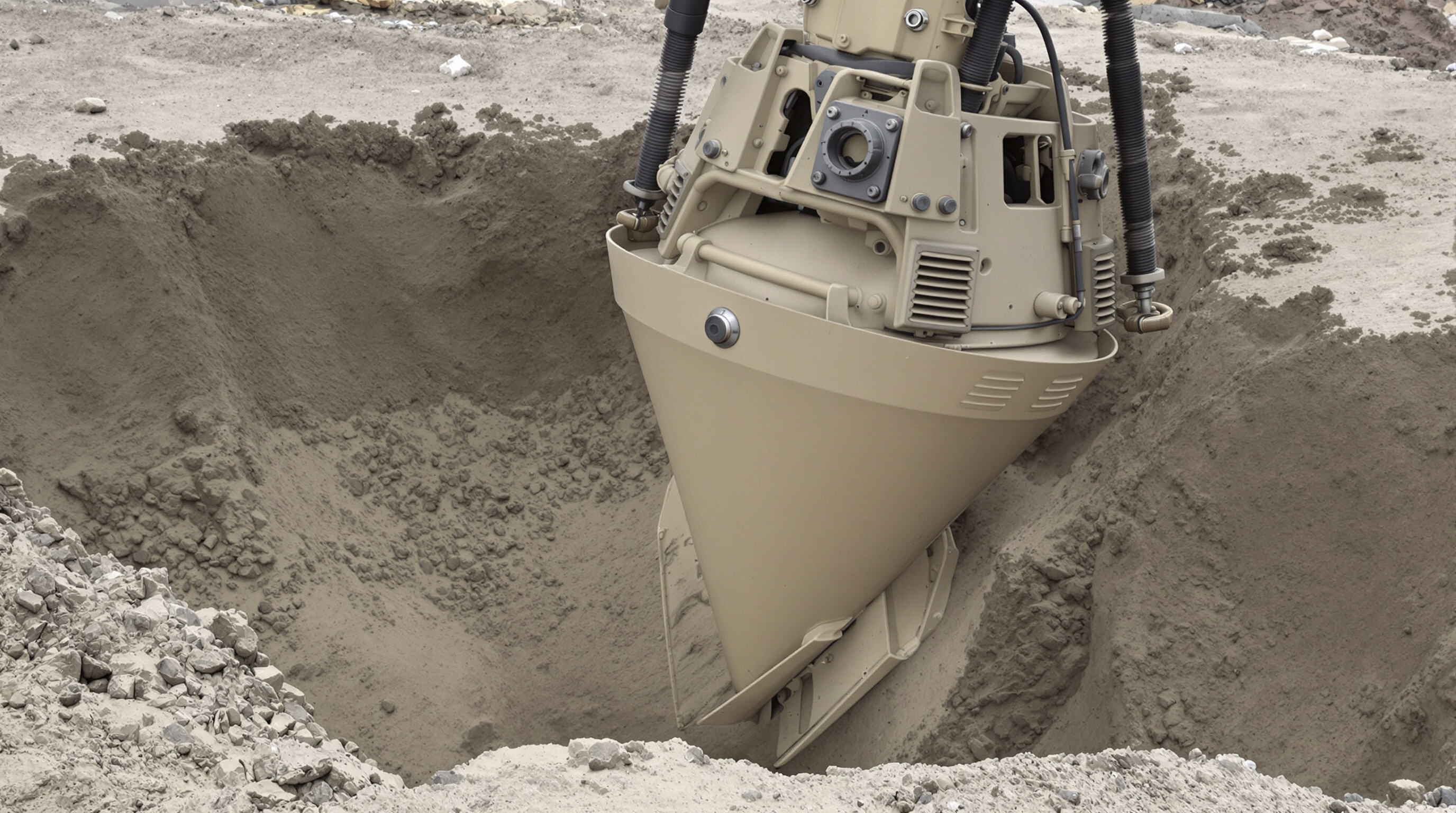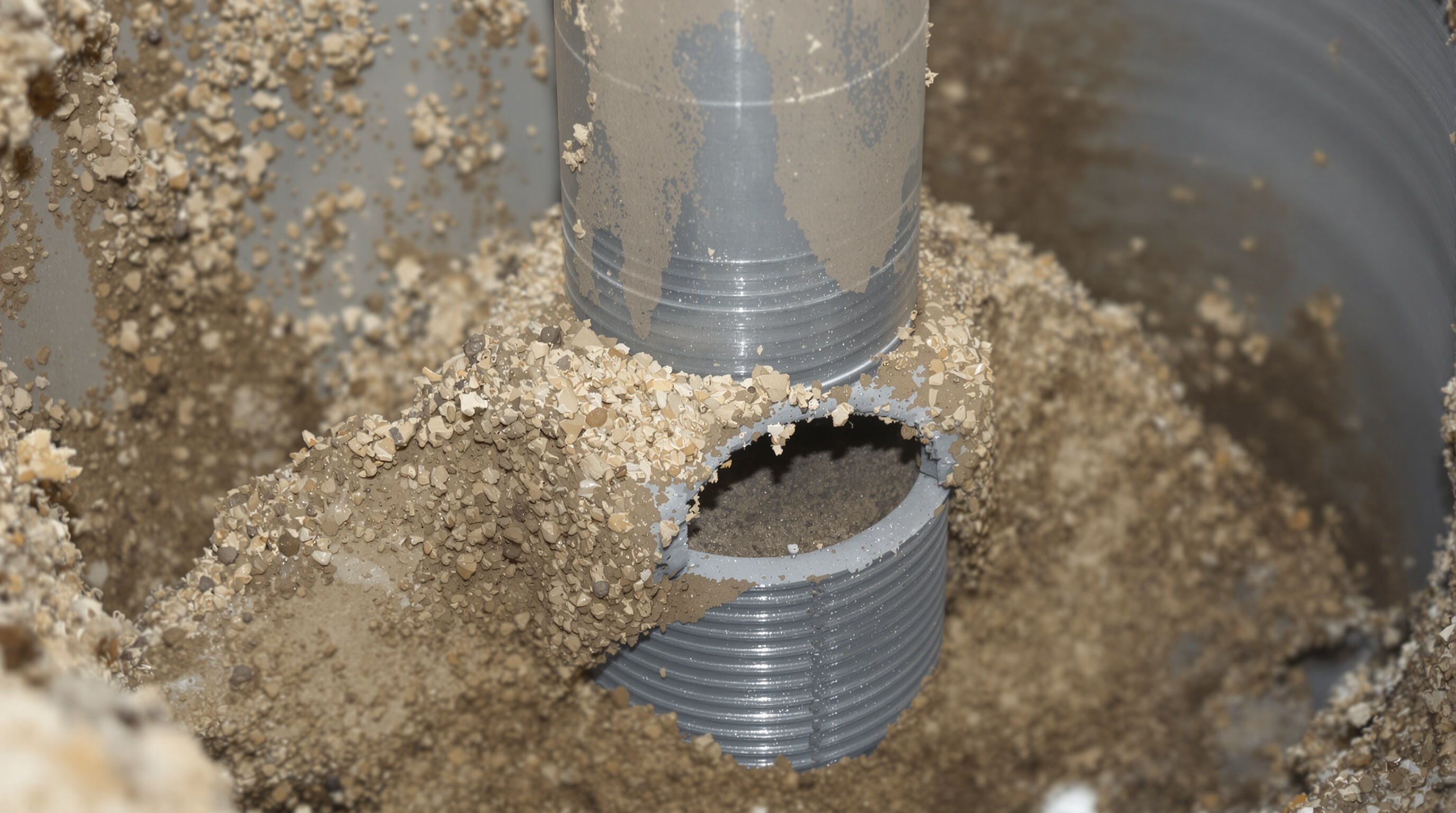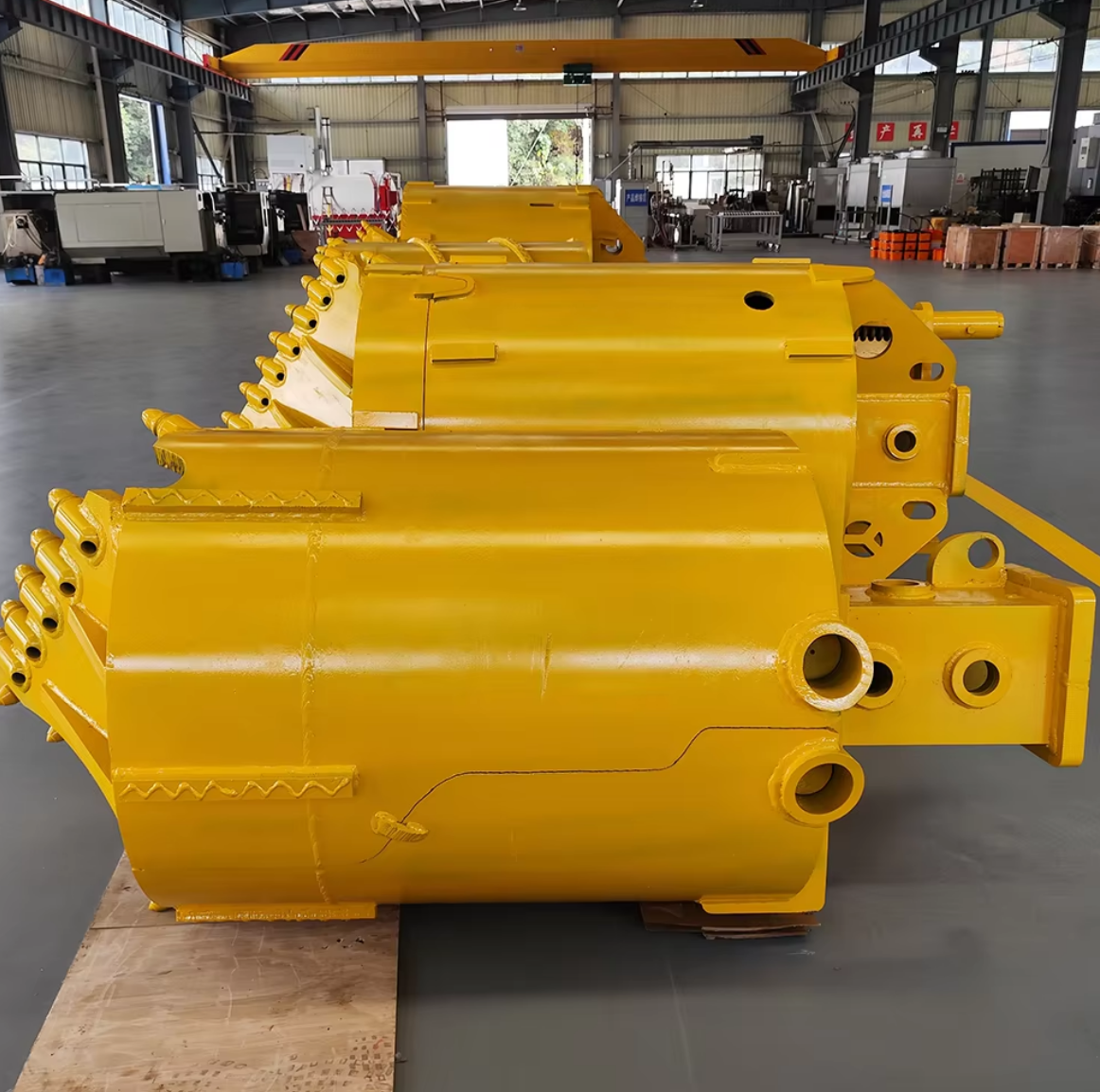Understanding the Challenges of Drilling Bucket in Sandy Soils
Characteristics of sandy soils affecting drilling bucket operations
Working with sandy soils can be really tricky because they just don't hold together well and let water pass through too quickly. These soils have particles that measure between about 0.075mm and 4.75mm according to ASTM standards, which classifies them as granular materials. Because of this grain size distribution, drilling fluids tend to drain away rapidly from the borehole area. That means drillers need special buckets that can move cuttings out fast before everything washes away. Another problem comes from the fact that sand doesn't have much plasticity at all. This actually makes the internal friction angle quite high, somewhere around 28 to 34 degrees, way higher than what we see in clay soils. The result? Drill bits and bucket teeth get worn down much faster, so equipment needs extra reinforcement to handle the increased abrasion over time.
Common issues like hole collapse and borehole instability
The risk of hole collapse jumps nearly three times higher in sandy soils than in cohesive formations. Why? Well, several factors come into play here. First, there's the way stresses redistribute around the empty space created during excavation. Then we have those pesky hydrodynamic forces from groundwater moving faster than 0.5 cm per second. And let's not forget about all that vibration from rig operations causing settlement issues. Temporary casing makes a real difference though. Field tests indicate it can cut down borehole failures by almost half when used alongside properly designed drilling buckets. Soil cohesion research published on xinfenghua.com backs this up, which explains why many drillers now consider temporary casing essential for maintaining stability in challenging ground conditions.
Why traditional drilling methods fail in loose, non-cohesive formations
Standard buckets designed for clay struggle in sand due to mismatched design parameters:
| Factor | Clay Performance | Sand Requirement |
|---|---|---|
| Cutting Edge | Wide blades | Narrow, staggered teeth |
| Discharge Rate | 65-70% retention | 90%+ evacuation |
| Wear Pattern | Uniform surface | Impact-resistant tips |
According to the 2024 Geotechnical Equipment Survey, 83% of contractors who upgraded to sand-optimized buckets reduced annual tool replacement costs by $18k. Pairing such equipment with temporary casing creates a controlled environment that mitigates sand instability.
Optimizing Drilling Bucket Design for Sand Penetration and Cuttings Control
Key Features of a Drilling Bucket Designed for Sandy Conditions

Specialized drilling buckets designed for work in sandy soils have unique shapes that help handle those loose, non-stick particles better. The cone shape cuts down on friction against the sides and keeps more material inside the bucket, something really important since most sand particles (around 63%) are smaller than 0.25 mm according to the latest Sand Drilling Efficiency Report from 2024. These buckets often come with modular blades that can be adjusted on site depending on how dense the sand is, which makes them load materials about 40% faster than older fixed design buckets. Some top quality models even include special vents along the sides to stop problems with suction when pulling out wet sand from below 15 meters deep in the ground.
Impact of Bucket Geometry on Cuttings Retention and Removal Efficiency
Bucket geometry directly influences sand transport efficiency. Key design impacts include:
| Design Element | Function | Performance Impact in Sand |
|---|---|---|
| Helix Angle (25-35°) | Controls material ascent speed | 30% faster removal vs. 15° designs |
| Blade Spacing | Prevents particle re-entry | 1.5x spacing cuts clogging frequency |
| Discharge Gate Size | Governs unloading speed | Oversized gates increase spillage by 22% |
Field tests show staggered flighting patterns reduce rotational torque by 18% in fine sands, while integrated vibration dampeners minimize cuttings settling during lift.
Material Selection and Wear Resistance in Abrasive Sand Environments
Steel alloys that resist abrasion and have hardness between 450 and 550 HB last about three times longer than regular carbon steel when exposed to silica rich sands. Adding tungsten carbide to cutting edges cuts down how often replacements are needed by around 60 percent according to the 2024 Drilling Equipment Wear Analysis report. The dual phase heat treatment creates surfaces strong enough to handle quartz concentrations ranging from 9 to 12 grams per cubic centimeter without developing pits. This matters because sand particles actually create really high local pressure points during rotation, sometimes reaching as much as 14 kilonewtons per square centimeter.
Using Casing Systems to Ensure Borehole Stability in Unconsolidated Sands

Temporary casing serves as a structural barrier against lateral soil pressure, reducing collapse risks by up to 80% in non-cohesive sands by redistributing stress away from exposed bore walls (2023 geotechnical study).
How Temporary Casing Prevents Collapse in Unconsolidated Formations
In sandy soils lacking natural cohesion, temporary casing provides a rigid boundary that prevents granular sloughing into the borehole. This is especially critical in water-saturated conditions, where hydraulic pressure accelerates erosion and increases liquefaction risk.
Types of Drilling Casing Suitable for Sandy Soil Applications
Three systems perform best in sandy environments:
| Casing Type | Key Advantage | Ideal Use Case |
|---|---|---|
| Vibratory-Driven | Rapid installation in dry sands | Shallow boreholes (<20m depth) |
| Rotary-Driven | High torque resistance in dense sands | Deep foundations |
| Interlocking Segments | Adjustable length for variable strata | Sites with mixed soil layers |
Wall thickness (6-12mm) and corrosion-resistant coatings enhance durability in abrasive settings.
Casing Installation Methods and Their Impact on Drilling Continuity
The simultaneous drilling and casing method, or SDC for short, really boosts efficiency because it lets operations keep moving forward without stopping. With top driven systems, workers can make those quick fixes when dealing with tricky sandy ground conditions. Bottom driven units tend to line things up better for deeper holes though. Some field testing has actually shown these SDC methods can crank up drilling speeds around 35 percent faster than old school sequential approaches. When everything works right together between the casing and the bucket system, there's less chance of getting stuck and the whole process keeps running smoothly with all those cuttings coming out as they should.
## Synchronizing Drilling Bucket and Casing for Peak Performance
### Importance of alignment between drilling bucket size and casing diameter
Optimal clearance between bucket and casing—ideally within a 5% differential—ensures efficient cuttings removal without compromising borehole support. Mismatches greater than this threshold can increase sand recirculation by 40%, requiring 18% more drilling passes to reach target depths (2023 geotechnical engineering study). Precision alignment minimizes rework and enhances overall productivity.
### Evaluating compatibility across rig models and manufacturers
Rig capabilities vary widely, with torque outputs ranging from 120-320 kN·m and hydraulic flows between 90-220 L/min. Critical compatibility factors include:
| Compatibility Factor | Standard Range | Sandy Soil Requirement |
|----------------------------|----------------------|------------------------|
| Bucket-to-Casing Diameter | 1:1.05 — 1:1.15 | 1:1.08 — 1:12 |
| Bucket Rotation Speed | 20-35 RPM | 15-28 RPM |
| Casing Advancement Force | 50-80 kN | 60-100 kN |
Third-party certification programs like [ISO 14688-2](https://www.xinfenghua.com/blog/maximizing-efficiency-with-drilling-buckets) help validate interoperability, reducing installation errors by 34% in field trials.
### Real-world example: Integrated systems enhancing productivity
A leading manufacturer’s hybrid system achieved 30% faster advance rates in loose sands through synchronized deployment. The configuration includes wear-resistant tungsten carbide teeth, interlocking casing joints with <2mm radial tolerance, and automated advancement tracking at 5cm resolution. This setup maintained 97% borehole verticality, exceeding API RP 13B-2 standards in non-cohesive formations.
### Trend: Integrated bucket-casing advancement systems
Modern casing advancement systems now integrate real-time load monitoring and automated alignment corrections, cutting manual intervention by 75% in sandy conditions. Machine learning algorithms analyze torque data at 100Hz to anticipate formation changes up to 1.5 meters ahead of the drill face, improving responsiveness and reducing downtime.
Best Practices for Selecting Drilling Bucket and Casing Combinations in Sandy Conditions
Guidelines for Matching Drilling Equipment to Soil Types
When dealing with sandy soils, operators need buckets that have broader cutting edges and more open designs to handle all those loose particles properly. According to the latest drilling equipment compatibility report from 2024, buckets with openings about 30 to 40 percent bigger actually hold onto sand around 55% better than regular ones. The teeth on these buckets should be arranged in a staggered pattern too. This helps keep the sides of the hole intact instead of letting them collapse inward. What works for sandy ground doesn't necessarily work elsewhere though. Different soil types call for completely different bucket setups, something every experienced driller knows after spending time on site.
| Bucket Feature | Clay Applications | Sandy Soil Optimization |
|---|---|---|
| Cutting Edge Width | Narrow (15-20cm) | Wide (25-35cm) |
| Tooth Configuration | Dense, short teeth | Sparse, angled teeth |
| Material Thickness | 12-15mm | 8-10mm with wear-resistant coating |
Assessing Site-Specific Variables Before Choosing Bucket and Casing Setup
Before making any decisions about site preparation, it's important to look at how dense the sand is throughout different layers and check if there's water present underground. Saturated sands really need those interlocking casing joints to stop them from collapsing inward when we start extracting materials. According to a recent study published in the Geotechnical Survey (2023), around two thirds of problems with unstable boreholes in sandy areas came down to wrong sizing of the casings, usually about 5 to 10 centimeters bigger than what was actually needed. When dealing with cohesive sand layers though, combining helical flight buckets with temporary casing sleeves works wonders for keeping the shape of the borehole intact while allowing us to remove cuttings continuously. Real world testing has shown these methods cut down on drilling interruptions by nearly half in loose soil conditions.
Key Assessment Criteria:
- Sand particle size distribution (0.075-4.75mm ideal for standard buckets)
- Casing wall thickness tolerance (±1.5mm for depths <50m)
- Rig hydraulic pressure compatibility with combined bucket-casing loads
Frequently Asked Questions
Why is drilling in sandy soils challenging?
Sandy soils lack cohesion and have high permeability, which can lead to rapid drainage of drilling fluids and instability of boreholes.
What are the main risks associated with drilling in sandy environments?
Risks include borehole collapse, rapid wear of equipment due to abrasion, and challenges in maintaining the integrity of hole sides.
How do specialized drilling buckets aid in sandy conditions?
They have features like adjustable modular blades and cone shapes to reduce friction and retain more material, improving efficiency and stability.
Why is temporary casing important when drilling in sand?
Temporary casing prevents borehole collapse by providing a rigid boundary that redistributes stress and counteracts soil erosion.
Table of Contents
- Understanding the Challenges of Drilling Bucket in Sandy Soils
- Optimizing Drilling Bucket Design for Sand Penetration and Cuttings Control
- Key Features of a Drilling Bucket Designed for Sandy Conditions
- Impact of Bucket Geometry on Cuttings Retention and Removal Efficiency
- Material Selection and Wear Resistance in Abrasive Sand Environments
- Using Casing Systems to Ensure Borehole Stability in Unconsolidated Sands
- Best Practices for Selecting Drilling Bucket and Casing Combinations in Sandy Conditions
- Frequently Asked Questions


